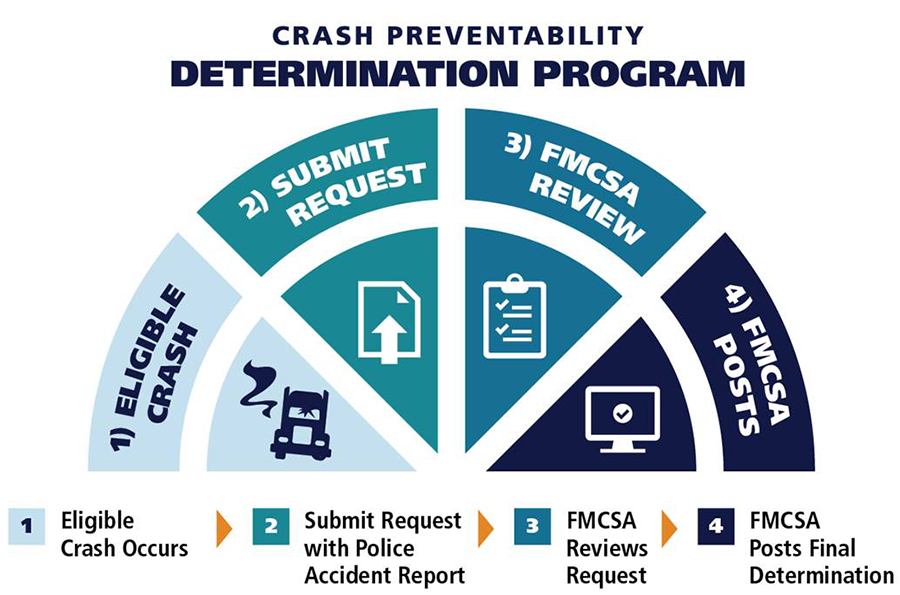Crash Preventability Determination Program (CPDP)

FMCSA’s Crash Preventability Determination Program (CPDP) reviews 21 specific crash types and modifies information in the Agency’s Safety Measurement System (SMS) to distinguish not preventable crashes. Under the CPDP, if you were involved in an eligible crash, you may submit a Request for Data Review (RDR) with the required police accident report and other supporting documents, photos, or videos through the Agency’s DataQs system.
Crashes determined to be Not Preventable through the CPDP are removed from the calculation of the Crash Indicator Behavior Analysis Safety Improvement Category (BASIC) in FMCSA’s SMS, but are still listed on the website. Not Preventable determinations are also noted in FMCSA’s Pre-employment Screening Program.
Crash Eligibility
FMCSA expanded the CPDP on December 1, 2024. Crashes on or after this date follow the eligibility list on this page, while those prior to December 1, 2024, will be reviewed under the previous standards. FMCSA cannot review crashes older than 5 years. For eligibility requirements for crashes occurring prior to December 1, 2024, click here.
-
CMV was struck in the rear by a motorist.
-
CMV was struck on the side at the rear by a motorist.
-
CMV was struck on the side by a motorist operating in the same direction as CMV.
-
CMV was struck because another motorist was driving in the wrong direction.
-
CMV was struck because another motorist was making a U-turn or illegal turn.
-
CMV was struck while legally stopped at a traffic control device or parked, including while the vehicle was unattended.
-
CMV was struck because another motorist did not stop or slow in traffic.
-
CMV was struck because another motorist failed to stop at a traffic control device.
-
CMV was struck because another individual was under the influence (or related violation, such as operating while intoxicated), according to the legal standard of the jurisdiction where the crash occurred.
-
CMV was struck because another motorist experienced a medical issue which contributed to the crash.
-
CMV was struck because another motorist fell asleep.
-
CMV was struck because another motorist was distracted (e.g., cellphone, GPS, passengers, other).
-
CMV was struck by cargo or equipment from another vehicle, or debris (e.g., fallen rock, fallen trees, unidentifiable items in the road).
-
CMV crash was a result of an infrastructure failure.
-
CMV struck an animal.
-
CMV crash involving a suicide death or suicide attempt.
-
CMV was struck because another motorist was entering the roadway from a private driveway or parking lot.
-
CMV was struck because another motorist lost control of the vehicle.
-
CMV was involved in a crash with a non-motorist.
-
CMV was involved in a crash type that seldom occurs and does not meet another eligible crash type (e.g., being struck by an airplane or skydiver or being struck by a deceased driver in another vehicle).
-
Any other crash involving a CMV where a video demonstrates the sequence of events of the crash.
For more information on the Crash Preventability Determination Program, please visit:
- Crash Preventability Determination Program: Eligibility Guide
- Crash Preventability Determination Program: Submitter Guide
- Crash Preventability Determination Program: Frequently Asked Questions
- Crash Preventability Determination Program: Quarterly Statistics
- Crash Preventability Determination Program: Federal Register Notices
- Crash Preventability Determination Program: Presentation
- Crash Preventability Determination Program: Fact Sheet
For information on the previous Demonstration Program, please visit:
